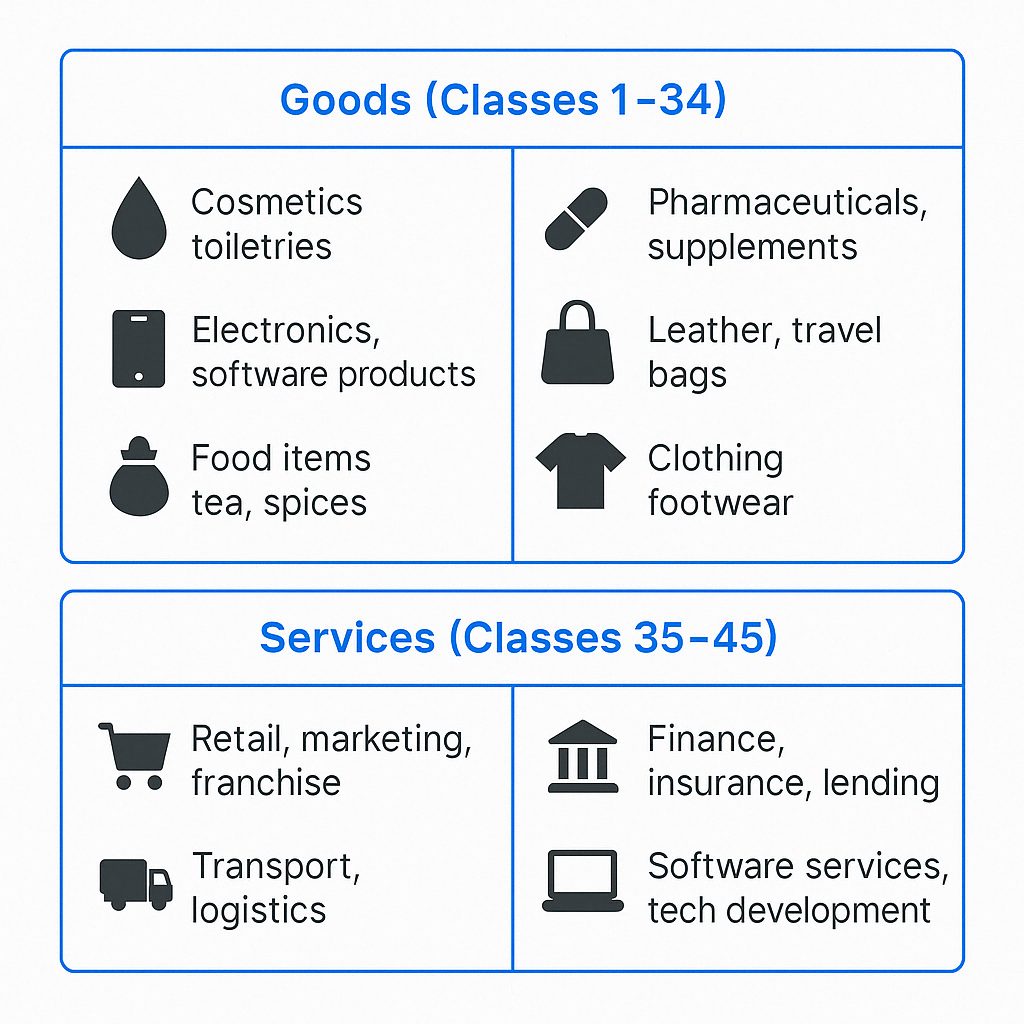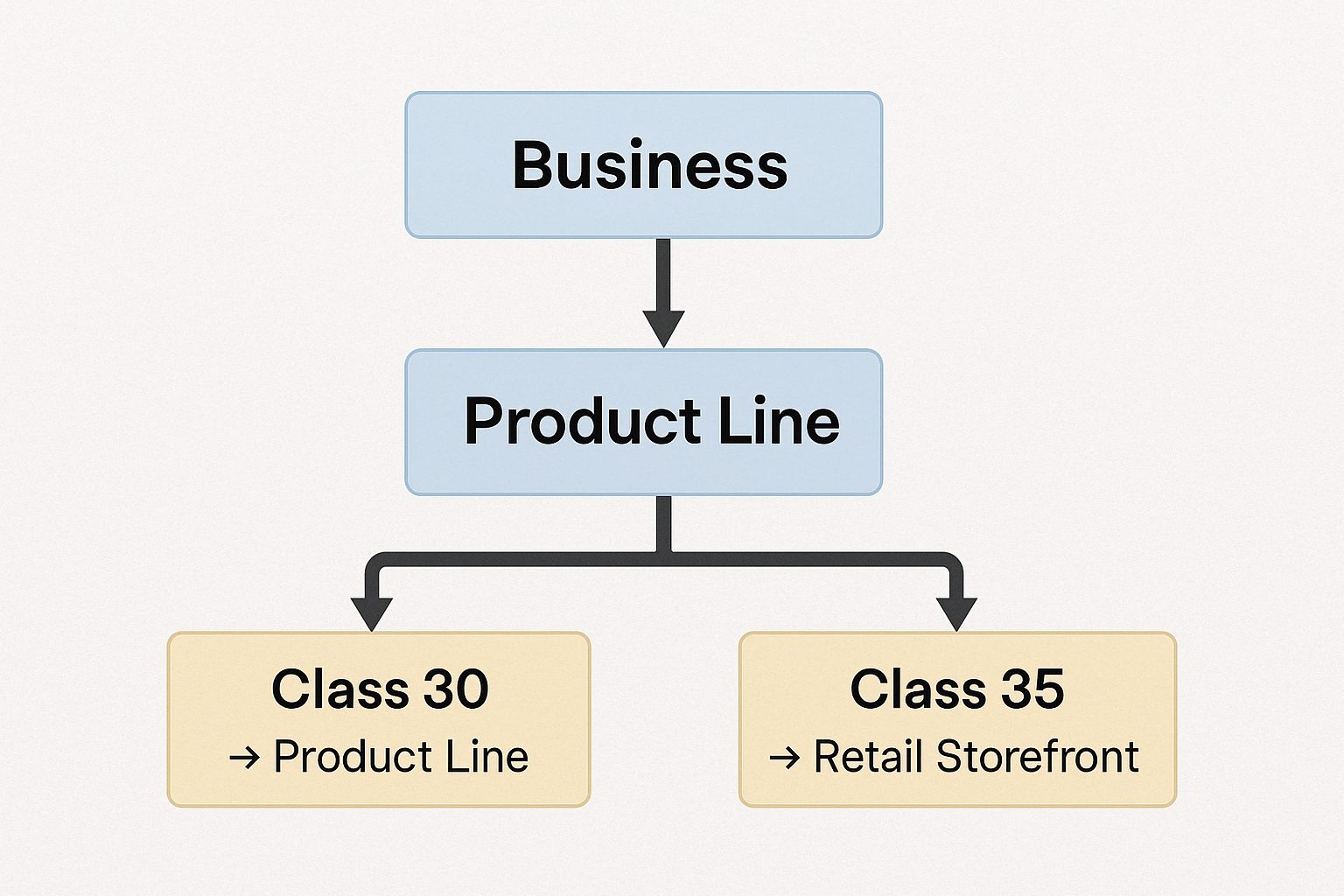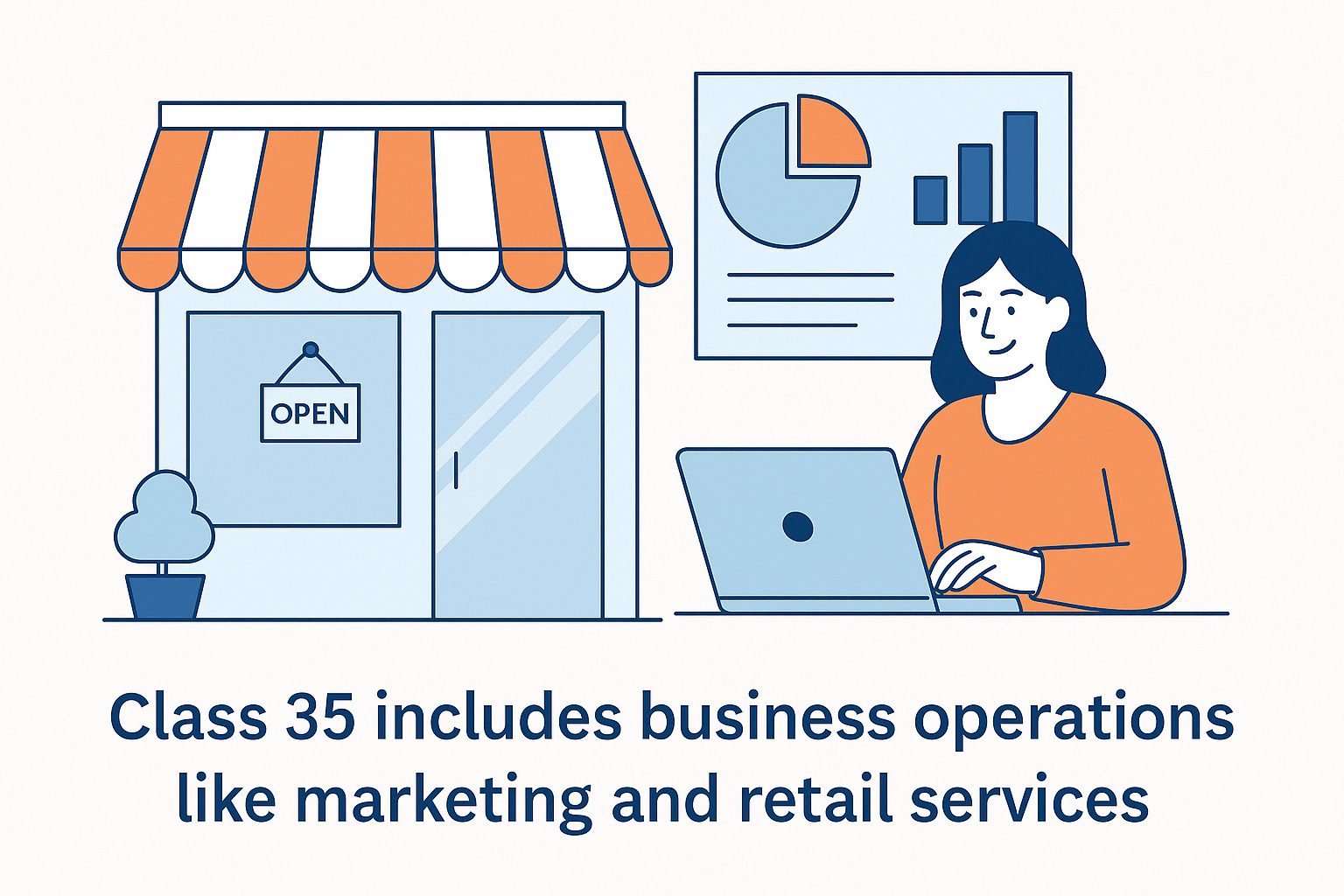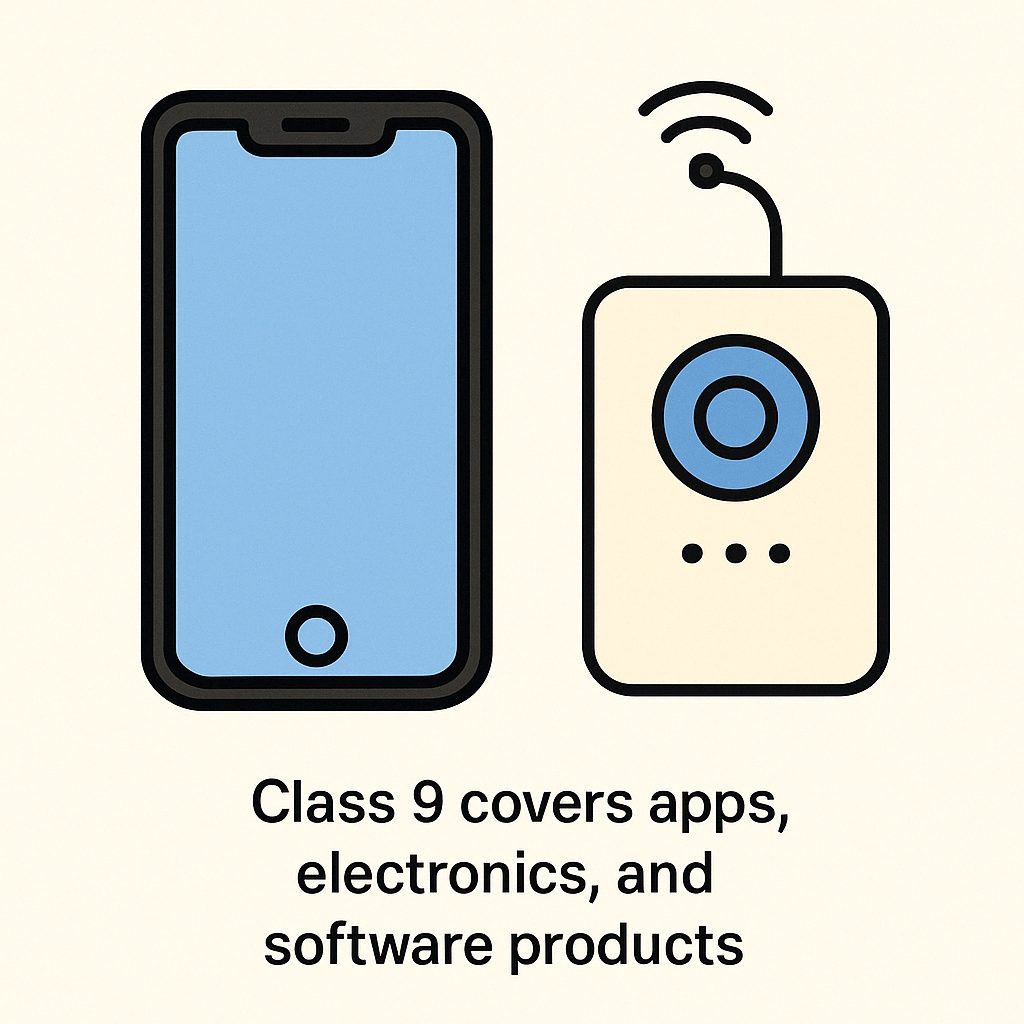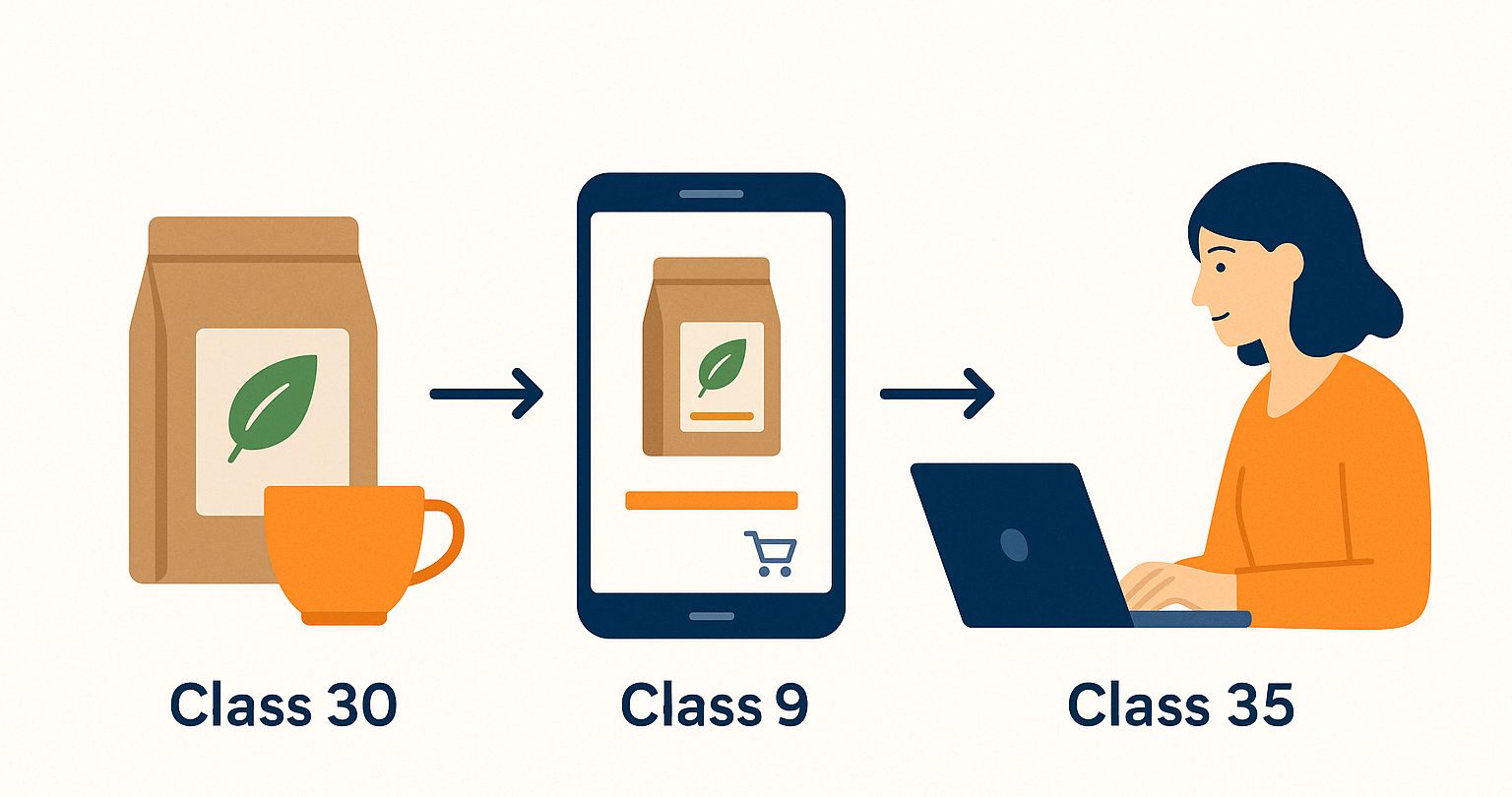Table of Contents
- Introduction
- What Are Trademark Classes and Why They Matter for Indian Businesses
- Full Trademark Class List with Business-Relevant Examples
- How to Choose the Right Trademark Class for Your Business
- Popular Trademark Classes Indian Businesses File Under — and Why
- Common Mistakes to Avoid While Filing Trademark Classes
- Conclusion
Every business has a name, but not every name is protected. In India, registering a trademark goes beyond paperwork — it means filing under the right class. The trademark class list, based on the internationally adopted Nice Classification system, outlines where your brand has legal protection. Whether you’re selling packaged food, running a logistics firm, or launching a SaaS product, your class determines the scope of your rights. This guide helps you choose the right class, avoid costly errors, and protect your brand properly.
What are Trademark classes and its importance
Let’s understand what exactly the trademark class is.
Trademark classes are legal categories. They decide what kind of business activity your brand name is protected under. India uses the Nice Classification system, which is followed globally.
It splits everything into 45 classes:
- 34 for physical goods
- 11 for services
Each class defines a separate scope of rights. Your trademark is only enforceable within the class you register under.
Must read: Check Trademark registration status: A step-to-step guide
Why do these classes matter so much?
Your trademark isn’t universal. It only protects your brand in the class you file under. Say you run a footwear brand and file under Class 25. That gives you no protection if someone uses the same name for a finance app (which falls under Class 36 or 42). That’s how trademarks work — they’re scoped, not sweeping.
What happens if I pick the wrong class?
This is where businesses slip. If you choose the wrong class — or skip one that applies — your trademark doesn’t shield you where you actually operate. That can have real consequences: • You may not be able to act if someone uses your name in a missed category.
- Government portals like GeM may reject your IP document.
- If you expand into a new product line, your earlier registration won’t cover it.
Once your application is approved, correcting it isn’t simple.
For MSMEs, it’s more than legal — it’s strategic
When your trademark is filed correctly:
- Your brand looks credible on public procurement platforms
- You avoid IP disputes as you grow
- You’re ready for GeM, TReDS, or even exports
Skipping the right class now could mean losing your name later.
Bottom line?
A trademark class list isn’t just a technical reference. It defines your brand’s legal territory. If you don’t claim your ground, someone else eventually might.
Full Trademark Class List with Examples
The trademark class list includes 45 legal categories. Each one defines a segment of goods or services. These classes are recognized in India under the Nice classification system.
- Classes 1 to 34: Products and goods
- Classes 35 to 45: Services
You must register your trademark under the correct class — or multiple classes if your business activities overlap.
Why can’t I just choose one class?
Most businesses operate across multiple touchpoints. You may sell goods and also offer support, delivery, or digital services. You may start in one class and expand later. If your trademark doesn’t cover those areas, your legal protection won’t apply.
What are the most common trademark classes used in India?
Here’s a simplified list with business examples. Focus on what matches your business model — not just your product.
Goods (Classes 1–34)
| Class | What It Covers | Indian MSME Example |
| 3 | Cosmetics, toiletries | Ayurvedic D2C brands, organic skincare lines |
| 5 | Pharmaceuticals, supplements | Herbal medicine startups, OTC brands |
| 9 | Electronics, software | App-based startups, gadget makers |
| 18 | Leather, travel bags | Handcrafted leather goods exporters |
| 25 | Clothing, footwear | Fashion retailers, ethnicwear brands |
| 30 | Food items, tea, spices | Packaged snack makers, tea estates |
Services (Classes 35–45)
| Class | What It Covers | Indian MSME Example |
| 35 | Retail, marketing, franchise | Online sellers, consulting firms |
| 36 | Finance, insurance, lending | NBFCs, fintech platforms |
| 39 | Transport, logistics | Courier startups, export logistics providers |
| 42 | Software services, tech | SaaS platforms, IT firms |
Can I register under multiple classes?
Yes — and often, you should. Let’s say a Delhi-based business sells packaged snacks and also runs a retail outlet. It would need:
- Class 30 for the food products
- Class 35 for the retail service
Skipping one could mean your brand is protected in-store but not online — or the other way around.
How does this affect GeM, tenders, or exports?
If your trademark class doesn’t match what you’re offering in a bid or procurement listing, your application could be disqualified. Government agencies, especially on GeM, do verify class alignment. It’s not just about filing. Your trademark must reflect your actual business activities on record.
How to Choose the Right Trademark Class for Your Business
Your trademark protection is only as strong as the class you file under. Pick the wrong one, and even if your brand name is registered, you may not be able to stop others from using it in your actual business space. The consequences don’t always show up immediately — but they do when you grow, go digital, or start listing on procurement platforms.
Where do most Indian MSMEs go wrong?
Many founders guess their class based on product type. But it’s rarely that simple. Let’s say you’re running a health drink brand in Gujarat. You might assume Class 30 (food items) is enough. But if your label includes wellness claims, Class 5 (pharma) could also apply. Or say you develop a food delivery app. That’s not just Class 30 — it likely involves Class 9 (software), Class 42 (tech services), and possibly Class 35 (delivery operations).
What if my business covers more than one class?
Then you’ll need to file under multiple classes. This is called multi-class trademark registration — and it’s common. Examples:
- A handmade soap brand (Class 3) that opens a store (Class 35)
- A tech analytics platform (Class 42) that adds payments feature (Class 36)
- An electric bike manufacturer (Class 12) with a GPS app (Class 9)
If you skip a relevant class, someone else can register a similar name in that space — legally.
What if I file only one class for now and expand later?
You can file for more classes later — but it’s a risk. If someone files a similar mark in your next category before you do, you might lose access — or be forced to rebrand. It’s smarter to anticipate your next 12–18 months and file for related classes upfront.
Must read: Trademark registration fees: In detail
Should I rely on online tools for class selection?
Tools like the IP India trademark search and WIPO’s Nice Lookup help — but they’re not enough. They don’t give strategic guidance. They won’t warn you about class overlap or help plan around product evolution. If your business spans goods and services — or is still evolving — it’s worth consulting a trademark advisor who understands how classification plays out commercially.
Popular Trademark Classes
Some trademark classes appear in filings more often than others. That’s because they reflect where Indian MSMEs are most active — food, retail, technology, textiles. Here are a few of the most commonly used trademark classes and why businesses keep circling back to them.
Class 35 Trademark — Where Retail and Services Collide
Class 35 isn’t about physical products. It covers services that support business operations — like managing a store, advertising, or helping others sell. You fall here if you’re:
- Running a supermarket
- Managing eCommerce listings
- Operating a franchise business
It’s one of the most overlooked classes — especially by product-focused founders who forget they’re also running retail operations.
Trademark Class 30 — Food, Tea, Spices, and FMCG
Class 30 is a top pick in India, especially among MSMEs in packaged food. Typical filings come from:
- Masala manufacturers
- Tea sellers
- Snack brands
However, if your product includes a medical or health claim — say, “improves digestion” — you may need Class 5 as well. That’s a common miss.
Trademark Class 9 — Software and Smart Products
Class 9 covers:
- Downloadable apps
- Educational or business software
- IoT and smart devices
It’s not just for tech startups. Traditional MSMEs integrating digital tools into their offerings — like logistics trackers or smart packaging — often fall here too.
Class 25 Trademark — Clothing and Footwear
If you work in textiles, this is likely your class. It includes:
- Apparel
- Shoes
- Workwear and accessories
If you sell directly online or offline under your own brand, you may also need Class 35. That covers the business activity behind your product.
Must read: Trademark registration renewal: How to apply online, documents, form to fill
Trademark Class 42 — Software Services and Platforms
This is where your tech operations belong if you:
- Build websites or apps
- Offer cloud-based services
- Run SaaS or platform-based businesses
Many tech firms file under both Class 9 (for the product) and Class 42 (for the service). This class is often reviewed by investors during funding — especially if your IP is a core part of your valuation.
Here’s the takeaway
You don’t need to memorize all 45 classes. But you do need to understand your business footprint. If you make, sell, and support a product — you probably need more than one class. That’s not overdoing it. That’s protecting what you’ve built.
Common Mistakes to Avoid While Filing
Even well-run businesses make trademark mistakes. It usually isn’t about intent — just assumptions, copy-paste filing, or skipping details. Here are five errors to look out for.
Mistake 1: Choosing the Class Based Only on the Product
You sell tea, so you file under Class 30. That sounds right. But then you launch an app for subscriptions or add a delivery platform. Suddenly, you also need Class 9, maybe even Class 42. Why it happens: Most people file for what they sell today, not how they sell — or what they’re building next. Fix: Map your product, delivery model, and digital channels. Then identify the relevant classes.
Mistake 2: Ignoring Retail and Marketing Activities
Many product-first founders forget that selling is a service too. If you manage your own storefront — offline or online — and don’t file under Class 35, your trademark might not protect that part of your business. Fix: If you’re doing the selling, not just making the product, Class 35 probably applies.
Mistake 3: Filing Too Narrow — and Too Late
Filing for just one class may feel fast and efficient. Until it isn’t. A real example: a tech firm filed under Class 9. Two years later, they launched a subscription platform — but didn’t register under Class 42. A competitor did. That competitor had the legal edge. Fix: Think 12–18 months ahead. File with your growth path in mind, not just today’s product.
Mistake 4: Assuming Tools Can Replace Advice
The IP India tool is helpful. WIPO’s class browser is too. But neither will tell you what to file based on how your business works. Fix: Tools can assist, not advise. If your business blends categories — like lending and analytics, or software and retail — speak to someone who understands IP in real-world business contexts.
Mistake 5: Not Updating When the Business Evolves
You start with Class 30, then expand into wellness — or develop a companion app. If you don’t update your trademark, you might end up with no protection in the new class. Fix: Every time you add a product, pivot your service, or launch something new — ask: “Does my current trademark cover this?”
Conclusion
Trademark Classes Aren’t Just Labels — They’re Your Legal Foundation Most business owners think about branding — but not always about where that branding fits on paper.
A trademark, by itself, protects nothing unless it’s filed under the right class. And the trademark class list isn’t just a technical requirement. It defines the boundary of your legal rights. It tells others what you own — and where you stand.
If you run an MSME in India, or you’re building something new, don’t leave this decision to guesswork. Look at what you’re doing today. Think about where you’re headed. Then choose the classes that give you space to grow without needing to look over your shoulder later.
Filing in the right class — or classes — isn’t about being extra cautious. It’s about knowing your ground and holding it before someone else does. And if you’re unsure? Ask someone who knows how this plays out in the real world. It’ll cost less now than it might later.
———————-
FAQs
What is the cost of filing a trademark in multiple classes in India?
Can I edit or update the class after trademark filing?
How long does trademark registration take in India?
Is a trademark class the same as a GST classification?
Do I need to file separately for logo and brand name in the same class?
Can two businesses use the same brand name in different trademark classes?
What happens if someone uses my brand name in an unregistered class?
Does filing under one class protect my brand across all online marketplaces?
Are international trademark classes different from Indian ones?
Can I sell on GeM without a trademark certificate?
Ananya Mittal blends a background in data science with a passion for writing, contributing to Tata Nexarc’s efforts in creating insightful, data-informed content for MSMEs. Her work focuses on exploring sector-specific challenges and opportunities across procurement, logistics, and business strategy. She is also involved in leveraging analytics to strengthen content performance and deliver actionable insights to India's growing B2B ecosystem.

